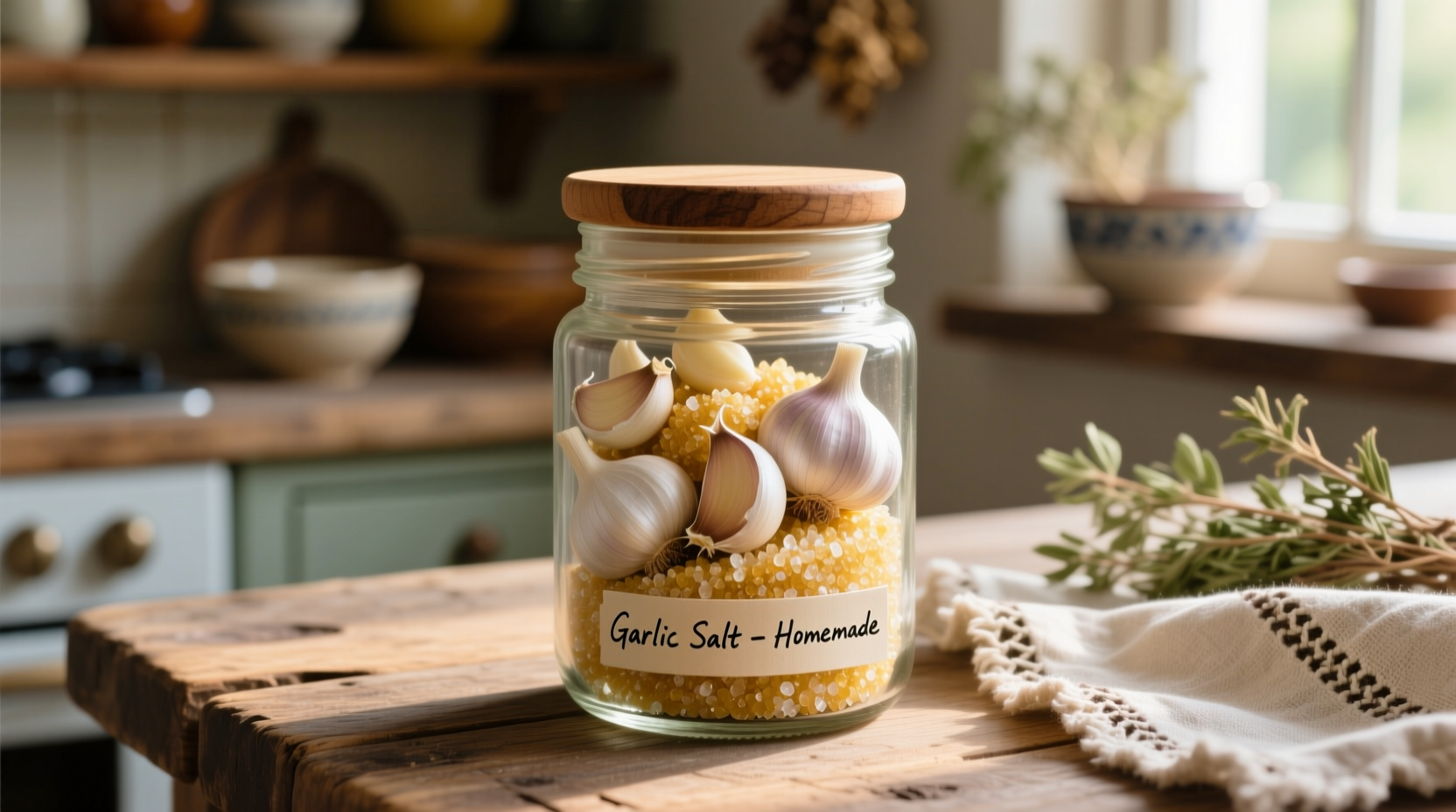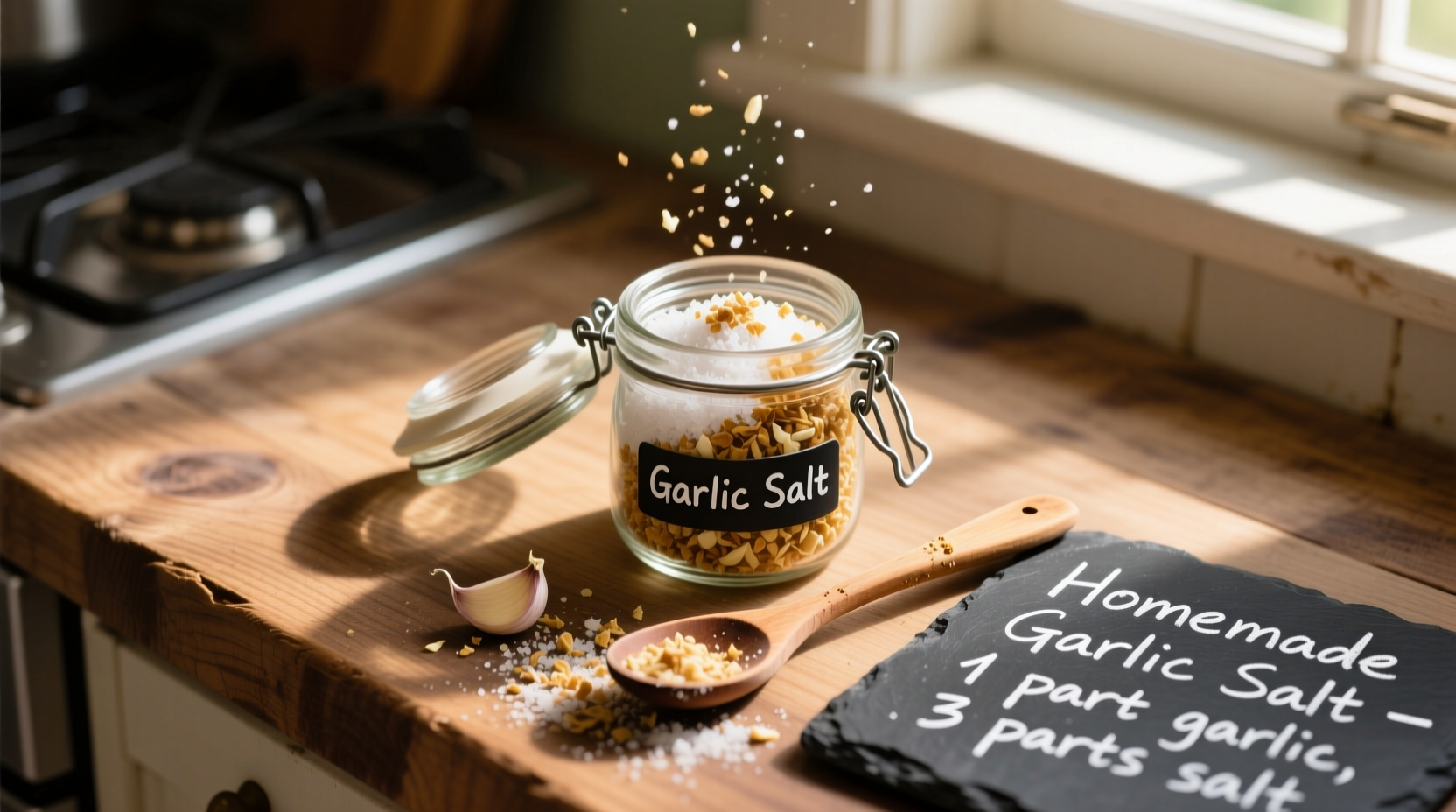Why Homemade Garlic Salt Beats Store-Bought Versions
Commercial garlic salt often contains anti-caking agents like calcium silicate and preservatives that dilute flavor. When you make garlic salt yourself, you control every element of the process. Professional chefs like Antonio Rodriguez emphasize that freshly prepared garlic salt delivers noticeably brighter, more complex flavor than mass-produced alternatives. The difference becomes especially apparent in delicate dishes where subtle seasoning matters.
What You'll Need: Ingredients and Equipment
Creating quality garlic salt requires minimal ingredients but proper technique. Here's exactly what to gather before starting:
Essential Ingredients
- Fresh garlic cloves (1 cup yields approximately 2 tablespoons garlic powder)
- High-quality salt (fine sea salt or kosher salt works best)
Recommended Equipment
- Dehydrator or oven (for drying garlic)
- High-speed blender or spice grinder
- Airtight glass container for storage
- Fine mesh sieve (optional, for smoother texture)
| Garlic Salt vs Garlic Powder | Garlic Salt | Garlic Powder |
|---|---|---|
| Composition | 3 parts garlic powder + 1 part salt | 100% dried garlic |
| Best For | Seasoning meats, vegetables, sauces | Baking, spice blends, rubs |
| Sodium Content | Higher (contains added salt) | Natural sodium only |
| Flavor Intensity | Milder garlic flavor | Stronger, more concentrated garlic |
Step-by-Step Garlic Salt Preparation
Step 1: Properly Dry Your Garlic
Drying garlic correctly determines your final product's quality. You have three reliable methods:
- Dehydrator method: Slice garlic cloves thinly (1/8 inch), arrange on trays, and dehydrate at 135°F (57°C) for 8-12 hours until completely brittle
- Oven method: Place sliced garlic on parchment-lined baking sheet, set oven to lowest temperature (170°F/77°C), prop door open slightly, and dry for 4-6 hours
- Air-drying method: String whole cloves on thread and hang in warm, dry, well-ventilated area for 2-3 weeks
The National Center for Home Food Preservation confirms that proper dehydration eliminates moisture that causes spoilage. Garlic must reach 10% moisture content or less for safe long-term storage.
Step 2: Grind to Perfect Consistency
Once completely dry, process your garlic:
- Break dried garlic into small pieces
- Grind in small batches using a spice grinder
- Pulse until fine powder forms (about 30-60 seconds)
- Sift through fine mesh sieve to remove larger pieces
- Re-grind any larger pieces for uniform texture
Professional chefs recommend grinding in short bursts to prevent overheating, which degrades flavor compounds. The ideal texture should resemble confectioners' sugar with no visible chunks.

Step 3: Mix and Store Properly
The standard professional ratio is 3 parts garlic powder to 1 part salt by volume:
- Measure 3 tablespoons garlic powder
- Add 1 tablespoon fine salt
- Mix thoroughly in glass bowl
- Transfer to airtight container
- Store in cool, dark place
This ratio creates balanced seasoning that enhances rather than overwhelms dishes. For stronger garlic flavor, adjust to 4:1. For reduced sodium content, use 2:1.
Troubleshooting Common Garlic Salt Issues
Preventing Clumping
Moisture causes garlic salt to clump. Prevent this by:
- Ensuring garlic is completely dry before grinding
- Adding 1-2 grains of uncooked rice to storage container
- Using fine salt that dissolves more readily
Maximizing Shelf Life
Homemade garlic salt lasts 6-12 months when stored properly. The USDA's FoodKeeper app indicates that properly stored dried garlic products maintain quality for 6-12 months. Discard if you notice:
- Change in color (should remain pale yellow)
- Mold growth
- Rancid or sour smell
- Hardened clumps that won't break apart
Creative Ways to Use Your Homemade Garlic Salt
While excellent as a general seasoning, homemade garlic salt shines in specific applications:
- Meat rubs: Combine with paprika and black pepper for steak
- Vegetable seasoning: Toss with roasted potatoes or green beans
- Soup enhancement: Stir into broths for instant depth
- Butter infusion: Mix with softened butter for garlic bread
- Homemade seasoning blends: Base for Chicago steak seasoning or everything bagel seasoning
Remember that homemade garlic salt contains actual salt, so adjust additional salt in recipes accordingly. This makes it particularly valuable for how to make garlic salt without too much sodium variations by controlling the salt ratio yourself.











 浙公网安备
33010002000092号
浙公网安备
33010002000092号 浙B2-20120091-4
浙B2-20120091-4